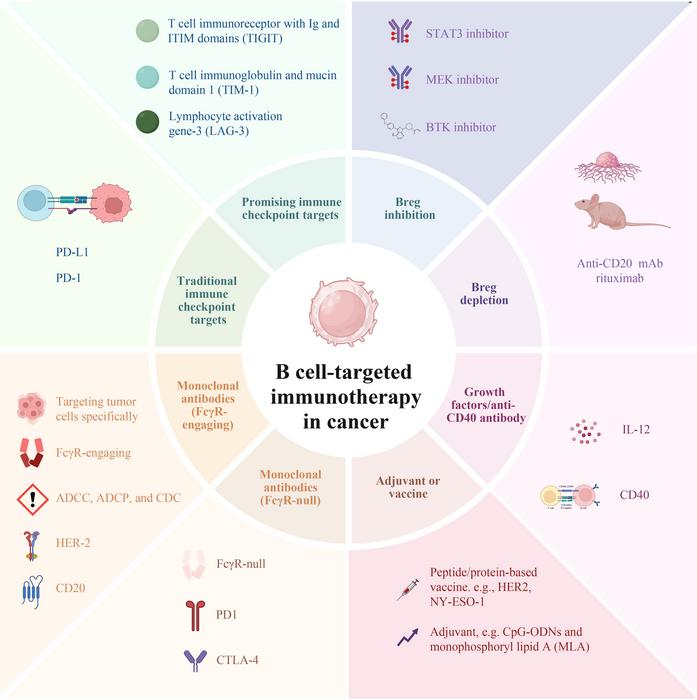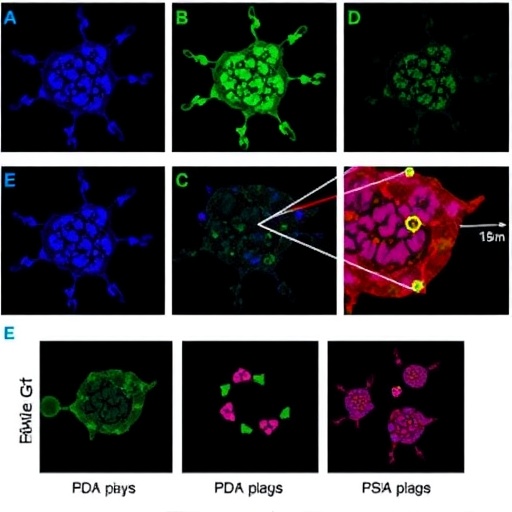B cells, traditionally celebrated for their role in antibody production, have emerged as pivotal players within the tumor microenvironment (TME), wielding a complex and often paradoxical influence over cancer progression. Once considered secondary actors in tumor immunology, recent advances illuminate their multifaceted roles that span from potent anti-tumor immunity enhancers to facilitators of immune evasion. This duality underscores an urgent imperative: to decode the intricate functions of B cells, paving the way for refined immunotherapeutic interventions that harness their beneficial properties while curtailing their pro-tumor mechanisms.
At the frontline of anti-tumor defense, B lymphocytes engage tumor-associated antigens with remarkable specificity. These cells orchestrate robust humoral responses, generating high-affinity antibodies through class switching and somatic hypermutation processes predominantly facilitated within tertiary lymphoid structures (TLS). TLS are ectopic lymphoid aggregates that establish a localized immune hub, enabling cohesive cooperation between B cells, T cells, dendritic cells (DCs), and natural killer (NK) cells. The presence of tumor-infiltrating B cells (TIL-Bs) within TLS has been correlated with improved patient prognoses in various cancers, including melanoma and renal cell carcinoma. Their secreted antibodies instigate complement-dependent cytotoxicity (CDC), antibody-dependent cellular phagocytosis (ADCP), and antibody-dependent cell-mediated cytotoxicity (ADCC), mechanisms that collectively target tumor cells for destruction with exquisite precision.
Beyond antibody secretion, B cells function as critical antigen-presenting cells (APCs), bridging innate and adaptive immunity by directly activating CD4+ and CD8+ T cells through major histocompatibility complex (MHC) presentation. These interactions are augmented by cytokine secretion—specifically interferon-gamma (IFN-γ) and chemokine CXCL13—which amplify recruitment and activation of effector immune populations within the TME. Such cytokine-mediated crosstalk bolsters the immunogenic landscape, enhancing T cell infiltration and fostering a microenvironment amenable to potent immune surveillance and tumor eradication.
.adsslot_b6S0Jydr4e{ width:728px !important; height:90px !important; }
@media (max-width:1199px) { .adsslot_b6S0Jydr4e{ width:468px !important; height:60px !important; } }
@media (max-width:767px) { .adsslot_b6S0Jydr4e{ width:320px !important; height:50px !important; } }
ADVERTISEMENT
Single-cell transcriptomics and spatial profiling have revealed an extraordinary heterogeneity among intratumoral B cells, differentiating subsets such as plasma cells, follicular B cells, and a subset termed “killer B cells” possessing intrinsic cytotoxic capabilities. Distinct spatial and functional distributions emerge across cancer types; germinal center (GC) reactions dominate colorectal tumors, engendering high-affinity antibody responses, whereas extrafollicular (EF) pathways prevail in hepatic malignancies, indicating tissue-specific immune ecosystem adaptations. This heterogeneity mandates a tailored understanding of B cell biology within each TME context to optimize therapeutic targeting.
Recent clinical studies consolidate the prognostic relevance of B cell infiltration patterns. High densities of TLS and associated B cells accompany favorable outcomes in melanoma and hepatocellular carcinoma, whereas elevated Breg populations often predict poor prognosis in gastrointestinal and head-and-neck cancers. Notably, tumor-derived antibodies may inadvertently foster metastasis by activating pro-inflammatory cascades or engaging tumor surface receptors that enhance invasive phenotypes, particularly observed in breast and gastric cancers. This phenomenon accentuates the nuanced balance between anti- and pro-tumorigenic B cell activities.
Emerging immunotherapeutic strategies increasingly seek to exploit B cells’ tumoricidal potential while mitigating their detrimental effects. Immune checkpoint inhibitors (ICIs), especially anti-PD-1/PD-L1 agents, facilitate B cell activation and TLS development but bear the risk of triggering autoimmune toxicities due to broad immune system activation. Monoclonal antibodies (mAbs) targeting B cell surface markers such as CD20 can effectively deplete pathogenic B cells; however, indiscriminate depletion can paradoxically enrich immunosuppressive Bregs, undermining therapeutic success.
The future of B cell-targeted cancer immunotherapy hinges upon the resolution of critical challenges: precise identification and characterization of pro- versus anti-tumor B cell subsets, elucidation of molecular signaling axes governing their plasticity, and achieving therapeutic equilibrium that maximizes immune activation while minimizing tolerance breakdown. Cutting-edge multi-omics technologies, spatial transcriptomics, and integrative functional assays promise to unravel the spatial and temporal dynamics of B cells in the TME, facilitating development of personalized, context-aware therapeutic regimens.
Combinatorial treatment paradigms that integrate B cell-targeted therapies with immune checkpoint inhibitors or adoptive T cell transfer hold exceptional potential for synergistic anti-tumor effects. However, obstacles such as tumor-driven immune suppression, antigenic loss, and chronic inflammation-induced B cell dysfunction threaten therapeutic durability. Overcoming these hurdles will require interdisciplinary approaches that merge systems immunology with bioengineering, immunogenomics, and clinical translation.
In conclusion, the multifaceted nature of B cells within the tumor ecosystem reflects both a formidable challenge and a tremendous opportunity. Their capacity to generate potent humoral and cellular immune responses situates them as indispensable components of effective cancer immunosurveillance. Yet their plasticity and potential to subvert immunity caution against simplistic targeting strategies. Integrating insights from single-cell profiling, neoantigen discovery, and precision immune modulation heralds a new frontier wherein B cells can transition from enigmatic actors to precision instruments in oncology, unlocking new therapeutic vistas that redefine cancer treatment paradigms.
Subject of Research: Not applicable
Article Title: Multifaceted function of B cells in tumorigenesis
News Publication Date: 20-Mar-2025
Web References: http://dx.doi.org/10.1007/s11684-025-1127-5
Image Credits: Na Kang, Qinghui Duan, Xin Min, Tong Li, Yuxin Li, Ji Gao, Wanli Liu
Keywords: Health and medicine
Tags: B cell-mediated tumor progressionB cells and anti-tumor immunityB cells in tumor microenvironmentcancer prognosis and B cellsdual roles of B cells in tumorshumoral immune response in tumorsimmune evasion in cancerimmunotherapy targeting B cellsmechanisms of antibody-mediated tumor destructionrole of B lymphocytes in cancertertiary lymphoid structures in cancertumor-infiltrating B cells





